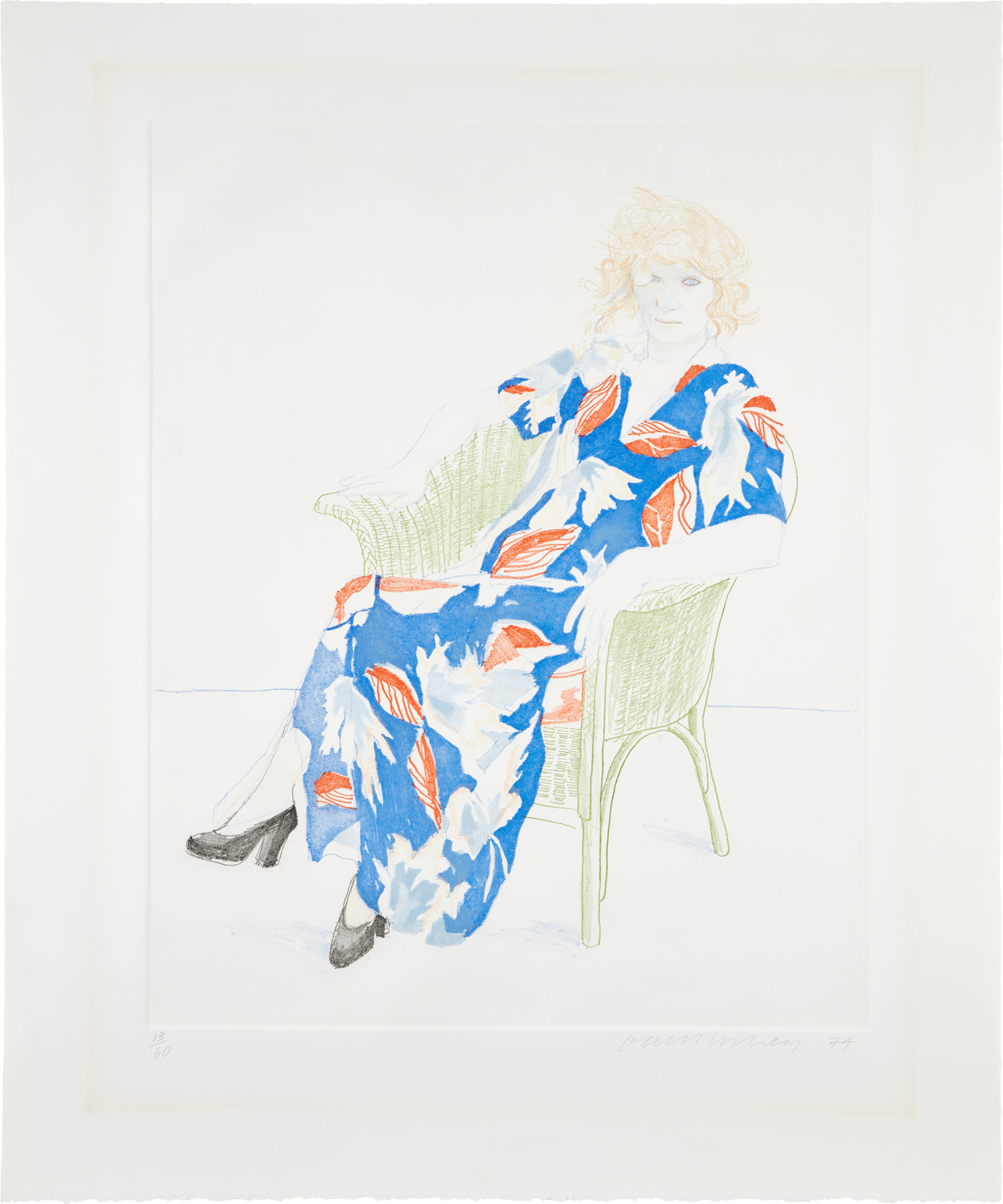



Property from an Esteemed Maryland Collection
295
David Hockney
Celia in a Wicker Chair (M.C.A.T. 158)
- Estimate
- $6,000 - 9,000
$13,970
Lot Details
Etching and aquatint in colors, on Rives BFK paper, with full margins.
1974
I. 26 7/8 x 21 1/4 in. (68.3 x 54 cm)
S. 35 1/2 x 29 5/8 in. (90.2 x 75.2 cm)
S. 35 1/2 x 29 5/8 in. (90.2 x 75.2 cm)
Signed, dated and numbered 13/60 in pencil (there were also 16 artist's proofs), published by Petersburg Press, New York and London, 1981, framed.
Specialist
Further Details
Full-Cataloguing
Literature
David Hockney
BritishDavid Hockney (b. 1937) is one of the most well-known and celebrated artists of the 20th and 21st centuries. He works across many mediums, including painting, collage, and more recently digitally, by creating print series on iPads. His works show semi-abstract representations of domestic life, human relationships, floral, fauna, and thechanging of seasons.
Hockney has exhibited at the Museum of Modern Art in New York, the Royal Academy of Arts in London, and the Van Gogh Museum in Amsterdam, among many other institutions. On the secondary market, his work has sold for more than $90 million.
Browse ArtistHockney has exhibited at the Museum of Modern Art in New York, the Royal Academy of Arts in London, and the Van Gogh Museum in Amsterdam, among many other institutions. On the secondary market, his work has sold for more than $90 million.